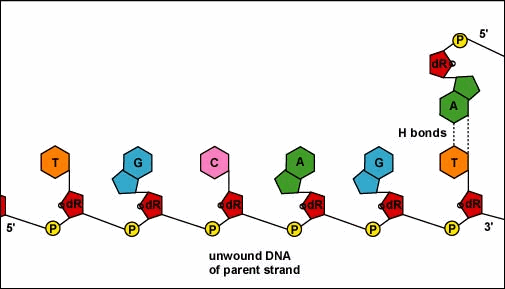Replication of DNA by Complementary Base Pairing

Replication of DNA by Complementary Base Pairing

by Gary E. Kaiser, Ph.D.
Professor of Microbiology,
The Community College of Baltimore County, Catonsville Campus
This work is licensed under a Creative Commons Attribution 4.0 International License.
Based on a work The Grapes of Staph at https://cwoer.ccbcmd.edu/science/microbiology/index_gos.html.
Last updated: August, 2019
Please send comments and inquiries to Dr.
Gary Kaiser